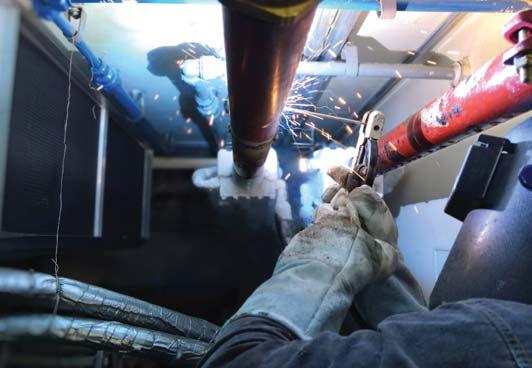
18 minute read
FREEZE PROTECTION
By Jonathon Harp
A primer on glycol Part I
Advertisement
With the heating season upon us, it’s time to discuss glycol, which is essential to HVAC system performance in the coldest months of the year. Referred to in some circles as antifreeze, this fluid is instrumental to water-based HVAC systems making it through the winter without pipe bursts and freeze ups. The application of glycol is critical to both the system’s performance and longevity.
Determining glycol/water mixtures
Types, characteristics and uses
There are two types of glycol typically used in HVAC systems: propylene glycol and ethylene glycol. The concentration (referred to as the water/glycol mixture) used is determined by climatic conditions, and the system type and location (indoor or outdoor). The two types of glycol have differing properties and are used in different applications. Systems requiring glycol use specific mixtures of water and glycol that will both provide protection from freezing and bursting, and not impede the performance and longevity of the system. The percentage of glycol in the mixture varies according to the temperature to which the system could be exposed. The lower the potential temperature, the higher the percentage of glycol required to protect the system.
Examples of glycol percentages in HVAC systems:
1. Snow and ice melting systems 50 to 60 per cent 2. Ground source heat pumps 15 to 25 per cent
Propylene glycol is more widely used in HVAC systems and is considered the more environmentally responsible choice. It is non-toxic, and according to some experts, one could drink it and not suffer any health issues. Propylene is the glycol of choice in most HVAC applications, particularly where there is potential for exposure to humans, or contamination of potable water and consumables. Only a small percentage of HVAC applications (generally industrial in nature) use ethylene glycol. It is moderately toxic, can be dangerous to humans, can contaminate drinking water or food, and is subject to environmental reporting in most jurisdictions in the event of a spill or discharge. Though ethylene glycol is lower cost, has lower viscosity, the environmental drawbacks have moved the industry away from it for the most part in HVAC systems. Table 1 outlines the key characteristics of the two types of glycol.
3. Solar water heating systems 45 to 60 per cent 4. Hydronic systems 30 to 50 per cent
Higher percentages of glycol are typically used in systems located outside where they are subject to lower temperatures, such as snow and ice melting, and solar water heating systems. Special types of glycol are needed for solar water heating systems to prevent breakdown of the fluid mixture, and potential system blockages in summer heat. Special mixtures are also necessary when there is a need for low fluid toxicity for ground source heat pumps (propylene glycol is typically used in this instance).
“The most popular glycol concentration requested by contractors for HVAC systems is 50-50 water to glycol,” says Brent Hicks of Chemfax, a glycol manufacturer. “This provides both freeze and burst protection for most systems.” Other popular mixtures within the HVAC industry fluctuate between 35 per cent and 70 per cent glycol.
Glycol is used in a wide range of equipment for protection from system damage in colder temperatures. In the HVAC industry, these systems can include: snow and ice melting systems, ground source heat pumps, solar water heating systems, and hydronic systems. Glycol is also used in chilled water cooling systems.
TABLE 1
Characteristic Ethylene Propylene
Viscosity
Flammability
Toxicity Lower Higher
Low Low
High level of acute toxicity if consumed Low level of acute toxicity
Tips to help determine the right glycol concentration for a particular system
1 2
When determining the glycol concentration to obtain the desired freeze and burst protection, use a freeze point at least 2.5º C below the lowest anticipated operating/exposure temperature of the system. Water quality is essential for glycol-water mixtures. One guideline for such mixtures uses the following parameters for water:
< 50 ppm calcium hardness < 50 ppm magnesium hardness < 25 ppm chloride < 25 ppm sulfate
If you are not using premixed glycol, be sure to have the water 3 analyzed for these characteristics. If the hardness or other factors for the water being used are significantly higher than recommended guidelines, softened or de-ionized water can be used.
When “topping up” systems, do not use water only. This can degrade the freeze and burst protection of the system. Any additions should be made with a proper mixture of water, glycol and inhibitors to maintain the desired level of protection. Table 2 shows examples of percentage volumes versus freeze points for ethylene and propylene mixtures.
ETHYLENE GLYCOL PROPYLENE GLYCOL
Per cent Volume Freeze Point (C) Per cent Volume Freeze Point (C)
0.0 0.0 0.0 0.0
13.6 14.5-5.4 -5.8
20.1 21.4 -8.9 -9.1
24.8 26.4-12 -12.4
30.6 32.4-16.2 -16.8
36.5 38.5-21.3 -21.9
41.5 43.7 -26.4 -27.4
45.5 47.8-31.1 -33.4
50.6 53.0-37.9 -45.5
52.7 55.0 -47.1 -51.1
Part II of this two-part series on glycol will appear in the January/ February 2021 issue of MB, and will delve into issues concerning the performance and operation of glycol systems, as well as providing tips for contractors on key factors to ensure systems perform well throughout their usable lives. Readers can reach Jonathon Harp at editorial@mechanicalbusiness.com.
Freezing point versus burst protection
The two protective properties of glycol in water-based HVAC systems are to prevent freezing and burst piping. Freeze protection involves a glycol/water mixture that ensures at the coldest temperatures the system might encounter, the fluid will not begin to form ice crystals in the piping. Once you’ve found the proper mixture for freeze protection, you have also ensured protection against burst piping (burst protection is the temperature at which the mixture in the pipes thickens to the point where the pipes expand, causing them to burst). The freeze protection temperature has an inherent burst protection temperature within it. For example, a 50-50 glycol/water mixture will typically provide freeze protection to around -34º C. The burst protection temperature for that mixture is about -100º C. Be aware that if the system is exposed to the maximum temperature (-100º C), while the piping will not burst, it will have a difficult time with startup. The design mixture can be increased to 55 or 60 per cent glycol to accommodate this problem.
PERFORMANCE UNDER PRESSURE
HYDROSTATIC TEST PUMPS MPS

Sprinkler line tie-in with pressure test coming next

•Pressure test t water systems, ms, both residential tial and commercial cial

EHTP500
ELECTRIC 2 gpm and 500 psi max
DPHTP500
DRILL-POWERED 1.3 gpm and 500 psi max
Reed Manufacturing • Erie, PA USA 800-666-3691 • reedsales@reedmfgco.com
www.reedmfgco.com
Kim Meadus
Name: Kim Meadus Employer: Link ClimateCare, Beaverton, ON Job Title: Senior Service Technician Lives in: Washago, ON Age: 63 Partner: Janet Meadus Joined the mechanical industry: 1994
Kim Meadus: Kim Meadus: Fix-it Man Extraordinaire Fix-it Man Extraordinaire
Kim Meadus always had a natural talent for fixing things. “I grew up with a gift from God,” he says. “I could look at anything and figure out how to take it apart and put it back together without ever losing a part or having anything left over.”
So when a heating contractor for Consumers Gas asked him to join him 26 years ago, he decided to get his gas fitter certification at George Brown. With his papers in hand, he joined his friend doing midnight diagnostic and service calls.
The transition was easy since given his fix-it history. “I had the mechanical aptitude to understand how pipes got put together,” he says. Since then he’s picked up a lot of additional skills, and is a resident expert on residential gas, hydronic, heat pump and geothermal systems.
Five years into his new found career, he joined Link ClimateCare in Beaverton and is now the longest standing non-family member for the company. “They really are a pretty nice group of people to work with.” Meadus says he owes a lot of his work ethic to his father, who was a skilled master carpenter. “He stressed that patience and listening to others is a virtue. That’s especially true in this type of business.”

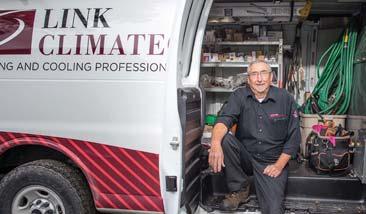

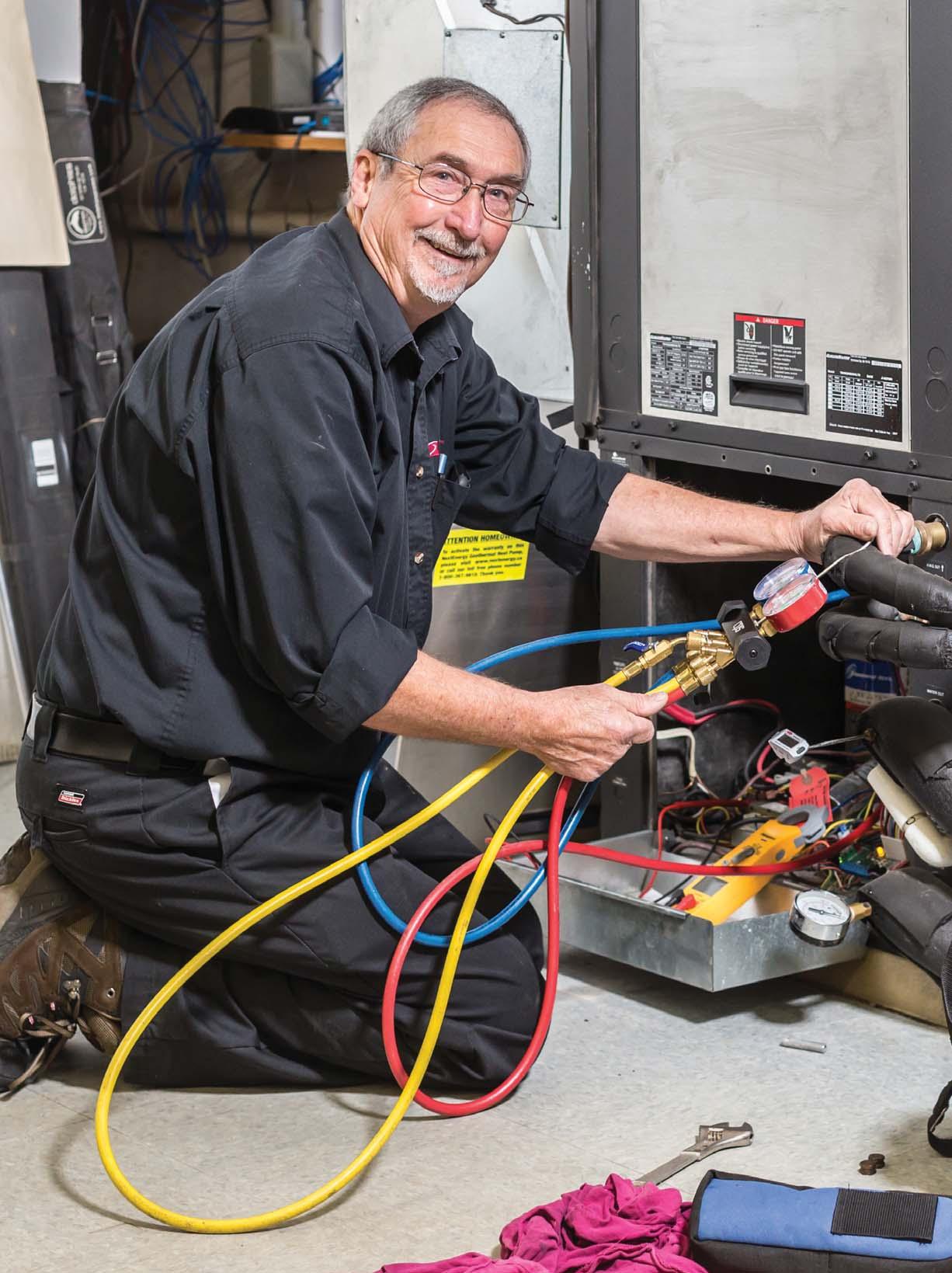
At the heart of everything he does is the satisfaction he gets from improving someone’s day by doing a job right. “I like fixing things for people and making them comfortable, happy and safe. That’s the biggest part of our business.”

The same passion for fixing things carries over to his home life. “I refuse to throw anything out that can be fixed. I was brought up to reuse, recycle and repair. I believe in making things right wherever I can.”
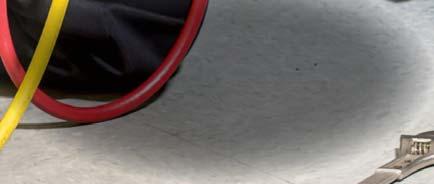
Kim Meadus has another passion beyond mechanics and planes. He’s an animal lover through and through. “I must have saved about 10 turtles a year from being run over when I’m on the road. I have to stop and save stop and save them.”


He loves doing calls in rural areas He loves doing calls in rural areas because he gets to enjoy the because he gets to enjoy the countryside and sightings of moose, countryside and sightings of moose, deer and wild deer and wild turkey in their turkey in their natural habitat. natural habitat. “You can’t beat “You can’t beat that.” that.”




One of his most One of his most memorable calls memorable calls was a customer in Kirkfield as a customer inn Kirkfield who had exotic turtles in his ho had exotic tu urtles in his basement. “I’ve gotten to sement. “I’ve gotten to gotten to know them since, and have quite a ow them since, and have quite a rapport with their animals.” port with their anim


Although he hasn’t travelled much in his life, his retirement bucket list speaks to his love of animals. “My first choice is a toss-up between Madagascar or the Galapagos for the wildlife. Then Tasmania and New Zealand. I would really love that.” Greatest teacher: Rick Schwab at Sarox Heating. “Back then he taught me everything I know.”
Current ride: A new Chevy service vanurrent ride: A new
Favourite car: A Corvette A Corv
Kilometers driven per day: Up to 200 kmKilometers driven per
Service area: Anything within a one hour’s drive from Service area: Anything Beaverton B Beave erton
Favourite dispatch area: Anywhere rural. I love to see atch areaFavourite dispa the countryside sideth t e countrys

Most useful tool in the toolbox: ost usefulMo M
My multimeter y multimetMy
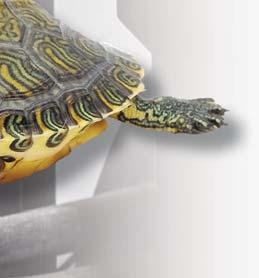
Favourite tool: My combustion analyzer My combuFavourite tool:
Tool you wish you had: A magic wand…or a better you had: ATool you wish boroscope ros scopeb bo
Favourite performer: Gordon Lightfoot Lightfoot
Favourite TV show: Ice Pilots NWT and Highway Thru Hell

Favourite cartoon:
Bugs Bunny

Favourite sport: Tennis or Formula 1 racing–it’s a toss-up
Favourite actor: Morgan Freeman
Favourite season: All of them. I don’t like consistent hot or cold
Pets: 3 cats: Kit Kat (alias Mama Bear), Sage, and her sister Mini Me (aka Million Dollar Cat–lots of vet bills)
Favourite video game: MS Flight Simulator
Favourite outdoor activity: Radio controlled flying
What you would like to do in a perfect world:
Fly for a living
Favourite place to hang out: At home with my wife.
Favourite snack: Pickle-flavoured chips
By Kerry Turner


Bob (Hot Rod) (Hot Rod) Rohr
AN EDUCATOR AND A GENTLEMAN

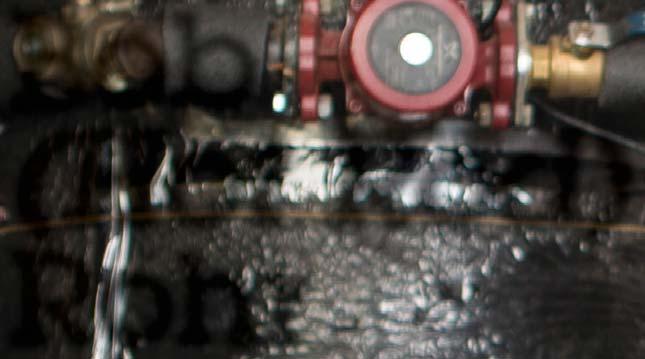
As Rohr and his wife Ellen search for a new home in Utah the number one priority is a workshop – no surprise for a “tinkerer.”

From thrill show worker at 17, to self-described “ski bum” to winner of the Carlson-Holohan Industry Award of Excellence, Bob (Hot Rod) Rohr’s career path embodies his openness to learning something new.
Rohr, who is currently education manager with Caleffi North America, Inc., has always loved to tinker with any mechanical device, so when an opportunity came along for a summer job with the American Thrill Show, he jumped at the chance. Just out of high school, Rohr was 17 and deemed “too young to do death defying stunts.”
“I graduated early and was too young to work there so I changed my age,” says Rohr.
While working there he was in his glory driving motorcycles off ramps and he even worked on cars that would later be used in stunts in a James Bond movie.
“I did that for a summer; the American Thrill Show was sponsored by American Motors which no longer exists. Once you get into it you realize that there are ways of doing things that the audience doesn’t see. “One stunt the show had was called the AstralSpiral; the car would spin in the air and land on a ramp. I didn’t get to drive the cars because I was six feet tall. The driver had to sit on the console for it to work and couldn’t be taller than 5 ft. 2 in. The stunt took 2.7 seconds and the drunk people in the stands would turn and miss it–then they would shout at us you to do it again, which we couldn’t do.”


If the car missed the ramp Rohr and the other mechanics had to fix it and try again and again.
“I didn’t tell my mother what I was doing. Eventually they found out and did come to a show.” No doubt Rohr’s parents weren’t too thrilled about the Thrill Show.
Even though he worked on the cars, Rohr was not there to see the Astral-Spiral performed as a movie stunt. “I didn’t get to go to the movie set, outside Bangkok, where they filmed the stunt for The Man with the Golden Gun.” The stunt involved “his” car spectacularly smashing through the showroom glass window of an American Motors Dealer. Rohr did, however, witness a truck carrying cars for the Thrill Show hit a Porsche. That accident changed his future. He testified for the car owner…and lost his job.
“Tom, the mechanic whose car was hit, and I became friends. He was heading out to Utah to be a ski instructor and suggested I go with him. I didn’t know how to ski but he said he had the gear and I could learn, so I went,” recalls Rohr. “I went from a thrill show to ski bumming. I was anxious to see the country, to leave New York. I have been out west ever since.”

This month Rohr will return to Utah, the place where years ago he started a business with Richard Yox. “Hot Rod and Yox” was later sold and Rohr ran his own plumbing, radiant heat and renewable energy contracting company for a number of years before joining Caleffi in 2008.
Son Max and wife Ellen celebrate Rohr’s win at AHR.
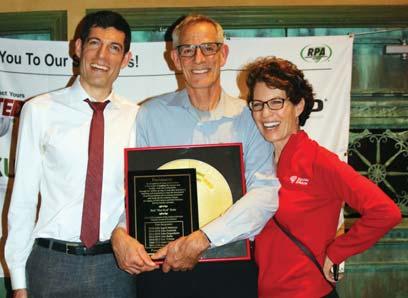
The “Academy Award” of hydronics
Rohr heads to Utah for his ski adventure with bikes in tow


Hot Rod’s history with mechanics started early. “I worked for my dad growing up, started way early maybe eight or nine years old on weekends and in my spare time cleaning fittings, playing with the plumbers’ putty. The carrot dad dangled was he would build me a go kart; the neighbour’s kids both had one. The go cart turned into a mini bike, as he only had two wheels to build from.

“I got my finger caught in the chain of this mini bike, that is how I lost that finger at age nine! My mom remembered it by “you will be 10 years old with only nine fingers” she never embraced the mini bike,” says Rohr.
On February 4, 2020, the last night of the AHR Expo in Orlando, FL the Radiant Professionals Alliance (RPA) announced that Rohr was recipient of the 20202022 Carlson-Holohan Industry Award of Excellence. His name joins a list of recipients, which includes such industry notables as Robert Bean, David Yates, Ingrid Mattsson, John Goshulak, Ken Webster, John Siegenthaler, and Mark Eartherton. “This award means everything,” Rohr said afterward. “It’s like the Academy Award of the industry!” John Siegenthaler, principal at Appropriate Designs, Holland Patent, NY, and the person Rohr attributes much of his interest in “thinking beyond the manuals” to, was among those in attendance. “Bob is one of the most generous people I know as far as helping people in the trades learn how to do hydronics right,” he said. “I wouldn’t venture to guess how many thousands of people he’s helped train. He’s a very humble guy–a character trait that is to be admired today. He’s done a lot for the industry,” said Siegenthaler.

DID YOU KNOW? Ellen Rohr is well-known for her books and presentations on pricing
contracting company.
a trainer-proud dad is thinking this will lighten his load.
Training in trying times
When he joined Caleffi Rohr already had a lot of training experience with RPA and manufacturers but this training gig was special. “This was the first time I was paid,” says Rohr. “I started right in the middle of the recession.” The steady income, along with doing what he likes best–talking about mechanical things and travelling–have been a good mix. Rohr has been with the company for 12 years now. Off the road now after travelling from coast to coast providing training and attending events for years, Rohr notes that “education and training is another product Caleffi offers; Coffee with Caleffi was already up to speed before the pandemic–offerings morphed into a stay-at-home training.”
With company resources he was able to make that transition
Snapshots
Goal in life
Anything that doesn’t move could be a radiator (and he’s tried, note the dog sculpture a.k.a radiator)
Memories made on Canadian soil
Family vacations in Parry Sound and firework displays at Honey Harbour in Ontario
Where did the moniker Hot Rod come from?
Neighbours in Orchard Park, NY thought it was appropriate given his Thrill Show experience and it has just stuck
Solar enthusiast
Holds a patent for the StarMax Solar Thermal collector
What do you like to do in your downtime?
Tinkering with any mechanical device, I have a pretty nice shop. I don’t golf but I do ski

successfully but there are challenges as more companies got on board with virtual. “Now there may be 50 manufacturers doing it. It is getting trickier. Contractors can’t just sit in front of the computer. They have to get on the tools and earn a living.”
We are working on solutions for contractors, thinking in terms of shorter. Maybe podcasts the contractors can listen to in their trucks.”
He has some ideas on what it takes to draw people, including doing things that are relevant in these times, and providing hands-on experiences. Most importantly, as someone who has seen some less than stellar webinars, Rohr says, “If you ask the world to come to your party you have to deliver. Give everyone in the room what they are looking for, be professional and know your material.”
As much as Rohr prepares for his training sessions, his enthusiasm comes in part from knowing he will learn something from those in attendance. He suggests industry cohorts watch social media where young people are posting some innovative approaches to design, installations and repairs. “It is neat to see the evolution,” says Rohr.








